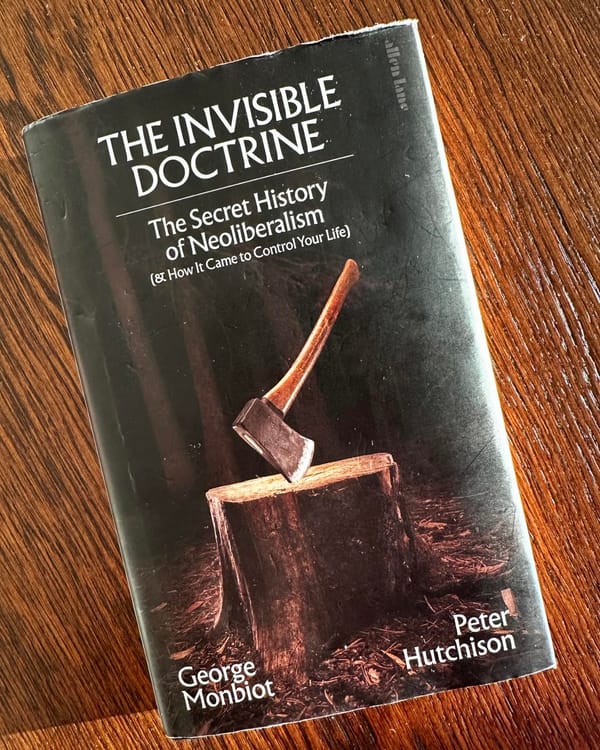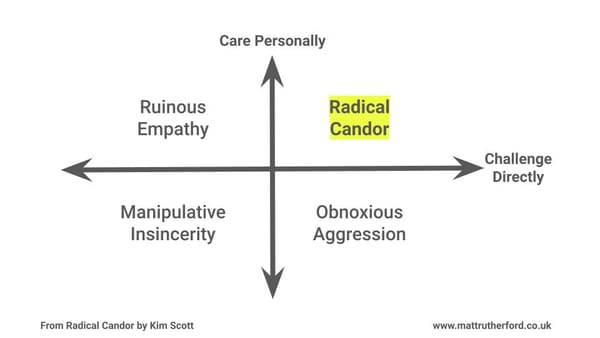Full disclosure, I’m hopeless at negotiation. So I was hungry to read this book and gain some new skills. Members of my team at work recommended it, and I was pleasantly surprised by the ease of reading and the tone of the book.
Negotiation is an essential skill.
Whether you're asking for a raise, closing a business deal, or even planning a holiday with family, how you negotiate can significantly impact the outcomes.
Never Split the Difference is by Chris Voss, a former FBI hostage negotiator, who shares insights that go beyond typical win-win strategies, revealing tactics used in life-or-death negotiations. His approach is practical, blending emotional intelligence with well-honed psychological strategies.
Here are my key takeaways and notes:
1. The Fallacy of "Win-Win" Negotiations
"Splitting the difference" – a common practice in negotiations – often results in suboptimal outcomes for both parties. This approach assumes that both sides should compromise to find common ground, but in many cases, it leads to unnecessary concessions.
For instance, if two people are arguing over the temperature of a room and one wants it at 30°C and the other at 20°C, a compromise at 25°C leaves neither person happy. In hostage situations, there is no room for compromise.
Instead of aiming for win-win, Voss advocates focusing on getting the best possible outcome without giving up value unnecessarily.
2. Tactical Empathy: The Power of Listening
One of the most powerful tools in negotiation is listening.
Voss introduces the idea of tactical empathy, which involves understanding and acknowledging the feelings and perspectives of the other party without necessarily agreeing with them. It's about getting inside the other person’s mind and using this understanding to guide the negotiation.
Key to this is making the other person feel heard and understood. You achieve this by actively listening and then using phrases like "It seems like..." or "It sounds like..." to reflect their emotions.
This validation builds rapport and makes the other party more open to finding a solution.
3. Mirroring: A Simple but Powerful Tool
Voss encourages the use of mirroring, a technique where you repeat the last few words (or the most important words) the other person says. This may sound simple, but it's effective in building rapport, encouraging the other person to elaborate, and keeping the conversation flowing. People feel more comfortable when they see their words reflected back, and it can also help buy you time to think of your next move.
For example, if your boss says, "We can’t give you a pay rise right now because budgets are tight," you could mirror by responding, "Budgets are tight?" This invites further explanation and can lead to deeper discussion.
4. The "No" Strategy: Making Your Counterpart Feel Safe
A real learning for me was that, "no" can actually be the start of a real negotiation.
Voss points out that when people say ‘no’, they often feel more secure and in control. Rather than pushing for ‘yes’ responses, it can be more productive to ask questions that allow the other party to say ‘no’ comfortably.
For instance, instead of asking, "Do you think we could reach a deal today?" (which pressures the other person to say "yes"), you might ask, "Is it a bad time to talk about this?" This allows the other party to feel safe, because "no" is less threatening, and it opens the door to further discussion.
5. Labelling: Identifying and Verbalising Emotions
Emotions, whether expressed or hidden, play a huge role in negotiations. Voss introduces labelling as a way to defuse negative emotions and reinforce positive ones.
For me, labelling is when you identify an emotion the other person seems to be feeling and state it out loud, using phrases like "It seems like..." or "It looks like..."
For instance, in a heated conversation with a colleague, you might say, "It seems like you’re frustrated with how things are going." This shows that you are paying attention to their feelings, helping to reduce tension and make them feel understood.
6. Accusation Audit: Addressing Fears Before They Surface
An accusation audit is a pre-emptive strike on the other person’s potential fears or objections. By addressing concerns before they arise, you can disarm your counterpart and make them more receptive to your ideas.
For example, if you're about to negotiate for a raise, you might say, "You probably think I’m being selfish or that this is bad timing, but…".
By anticipating and vocalising their objections, you lower their defences and build trust.
7. The Importance of “How” and “What” Questions
Instead of making direct demands, Never Split the Difference suggests using calibrated questions that begin with "How" or "What." These types of questions prompt the other person to think more deeply and often lead them to solve the problem for you.
For instance, instead of saying, "I need you to lower your price," you could ask, "How am I supposed to do that given my current budget?"
Doing this shifts the responsibility towards the other party, making them more likely to offer a solution that works for both sides.
8. Bending Reality with Anchors
Voss explains the importance of setting an anchor – a psychological reference point – early in a negotiation. Anchors can shape how the rest of the conversation goes. If you make the first offer, it tends to pull the negotiation in your favour. However, Voss warns that you should always be cautious with where you set the anchor, ensuring it doesn’t turn the other person off entirely.
One tactic is to establish a high anchor, then use tactical empathy and mirroring to work your way down to a more reasonable offer. This way, the final deal still feels favourable to you.
9. The Black Swan: Uncovering Hidden Game-Changers
Every negotiation has Black Swans. These are hidden, often surprising pieces of information that can drastically change the outcome. The book stresses the importance of staying curious and probing for these unknowns. Black Swans can be anything from the other person’s hidden motivations to details about their decision-making process.
For example, you might discover that a business partner is under pressure to close a deal quickly because they have an upcoming deadline, giving you leverage you didn’t realise you had.
My Key Takeaways & Insights
1. Embrace "No" as a Positive Step
- Takeaway: "No" is not the end of the conversation. It can be the starting point for deeper negotiation because it makes the other person feel safe and in control.
- Actionable Insight: Instead of pushing for "yes," ask questions that give the other person room to say "no" without feeling cornered. For example, "Is this a bad time to discuss this?" or "Would it be ridiculous to consider...?"
2. Use Tactical Empathy
- Takeaway: People want to feel heard and understood. Empathy builds trust and lowers defences.
- Actionable Insight: Acknowledge the emotions of the other party by using phrases like, "It seems like you’re feeling..." or "It sounds like you're concerned about..." Doing this can diffuse tension and create a more cooperative environment.
3. Master the Art of Mirroring
- Takeaway: Mirroring makes people feel more connected and encourages them to share more information.
- Actionable Insight: In your next conversation, try repeating the last few words or the key point someone has just said. For example, if someone says, "We’re struggling with project timelines," you can respond with, "Project timelines?" This invites them to elaborate and keeps the conversation flowing.
4. Label Emotions to Build Rapport
- Takeaway: Labelling emotions helps to neutralise negativity and enhance positive feelings.
- Actionable Insight: When you sense someone is frustrated or upset, label it by saying, "It looks like you're a bit frustrated with this situation." This can help de-escalate negative emotions and foster understanding.
5. Ask Calibrated Questions
- Takeaway: Calibrated questions (starting with "How" or "What") give the other party a sense of control and prompt them to think of solutions.
- Actionable Insight: Instead of making demands, ask questions like, "How can we move forward from here?" or "What would it take to make this work for both of us?" These questions invite collaboration without confrontation.
6. Conduct an Accusation Audit
- Takeaway: Pre-emptively addressing concerns or objections disarms the other party and builds trust.
- Actionable Insight: Before entering a tough conversation, list out the negative things the other person might think or say. Address them upfront: "I know you might be thinking I’m asking for too much right now, but..." This reduces their objections and makes them more open to negotiation.
7. Utilise Anchors Early
- Takeaway: The first number or idea introduced in a negotiation acts as a psychological anchor, influencing all further discussions.
- Actionable Insight: In your next negotiation, set the anchor early by being the first to suggest a number or framework. Aim high but be prepared to back it up with facts and empathy.
8. Uncover the Black Swans
- Takeaway: There are always hidden factors (Black Swans) that can shift the dynamics of a negotiation. These can be fears, constraints, or motivations that you aren't aware of.
- Actionable Insight: Stay curious and keep probing with calibrated questions. For example, ask, "What’s the biggest challenge you’re facing right now?" to uncover these unknown factors that could change the outcome.
9. Use Silence as a Tool
- Takeaway: Silence is a powerful tactic. It creates space for the other party to fill with more information or concessions.
- Actionable Insight: After asking a difficult question or making a request, stay silent. Let the other party process the request, and resist the urge to fill the void. Often, they’ll talk themselves into giving you what you want.
10. Go for "That's Right" Instead of "You're Right"
- Takeaway: "That's right" signals genuine agreement and understanding, while "You're right" often just signals someone trying to end the conversation.
- Actionable Insight: Summarise the other person’s perspective clearly so that they respond with "That’s right." For example, after discussing their concerns, you could say, "It sounds like you're worried about the cost and the timeline," which invites them to agree wholeheartedly.
Final Thought: Be Comfortable with Discomfort
Negotiation is not easy, and this book emphasises the importance of being comfortable with discomfort. Whether it’s waiting in silence after a calibrated question or confronting difficult emotions, these moments often hold the key to achieving the best outcome.
The strategies from Never Split the Difference are about taking control of the negotiation process, making the other person feel understood, and leveraging psychological tools to your advantage.
By incorporating these principles into negotiations, we can move from compromising to mastering the art of persuasion, achieving outcomes that were previously out of reach.
What negotiation challenge are you facing? Share your experience in the comments, and let’s discuss how these tactics could be applied in your situation.







Member discussion